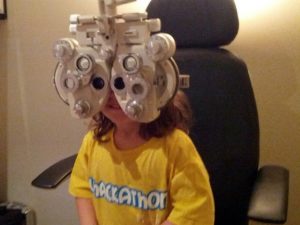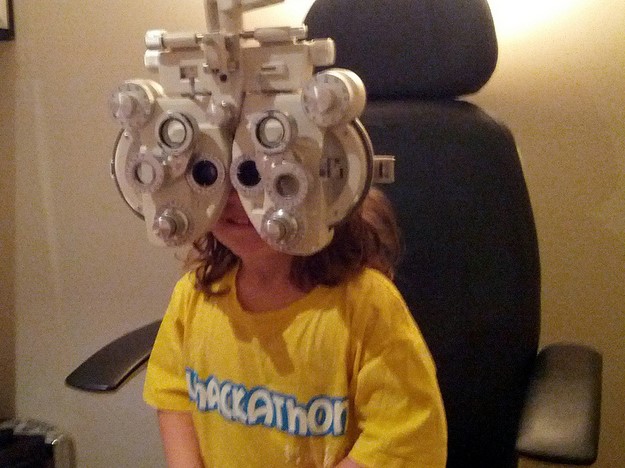 Nearly everyone is aware that there are important health checks for infants and children including immunization, well-child visits, and visits to the dentist. But have you had your child’s vision tested lately? Pediatric optometrists recommend having your child’s eyes checked at about 6 months of age, again at three years of age (provided no corrective steps were necessary during infancy), and again just before entering kindergarten at age 5 or 6.
Nearly everyone is aware that there are important health checks for infants and children including immunization, well-child visits, and visits to the dentist. But have you had your child’s vision tested lately? Pediatric optometrists recommend having your child’s eyes checked at about 6 months of age, again at three years of age (provided no corrective steps were necessary during infancy), and again just before entering kindergarten at age 5 or 6.
If you’ve noticed your toddler rubbing their eyes frequently or blinking more than is normal, it’s wise to schedule an appointment right away with an optometrist to evaluate whether or not there’s a vision problem or other eye health issue.
At six months old, a baby should see as well as an adult. An eye exam for a child of this age will include seeing whether their pupils expand and contract in response to light, whether the child can “fix and follow” an object, and if they practice preferential looking, or being attracted to a patterned rather than a blank card.
Eye examinations for toddlers include the use of eye charts with shapes rather than letters on them. In addition, a retinal exam will be done by shining a light at the back of the eye to examine the health of the retina. Testing using random dot patterns, called Random Dot Stereosis, show whether or not your child’s eyes work together.
In addition to being near or far-sighted or having astigmatism, other common eye problems in children include lazy eye, crossed or misaligned eyes, problems focusing or with depth perception, or the ability to recognize colors.
Providing that no conditions requiring corrections are found, your child should have an eye exam again when entering kindergarten. Children who can’t see the board or a book will become frustrated, and it may interfere with the learning process.
The staff at See Island Eyecare are experienced at caring for children’s vision and can help make your child’s visit as pleasant as possible. Contact us to schedule an appointment today.


